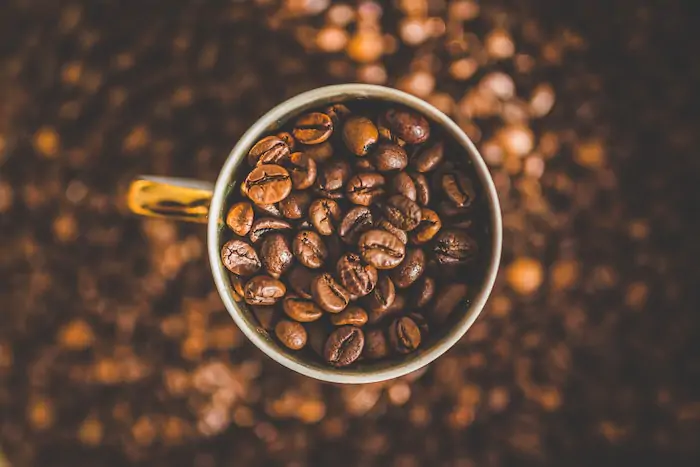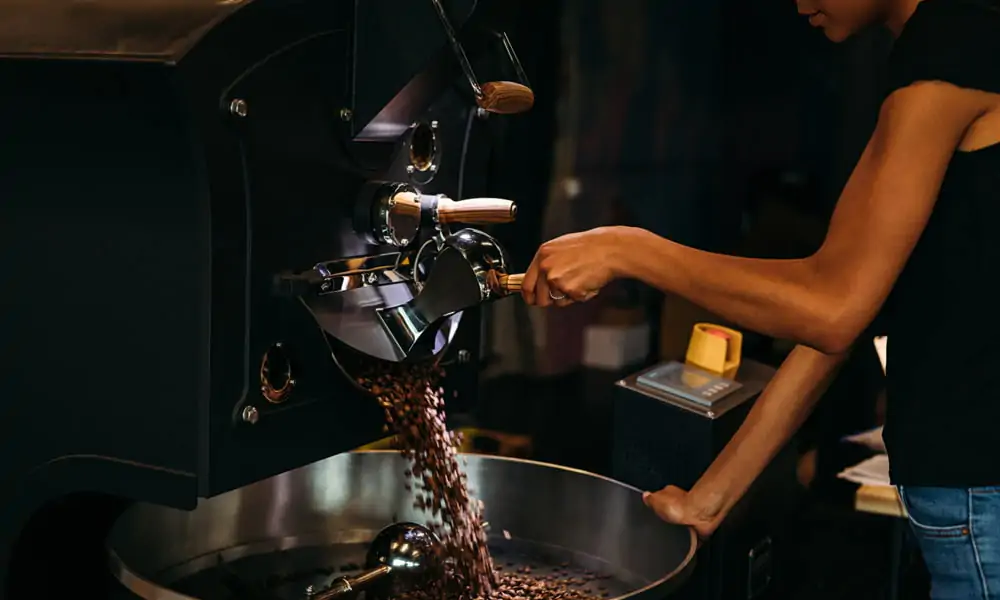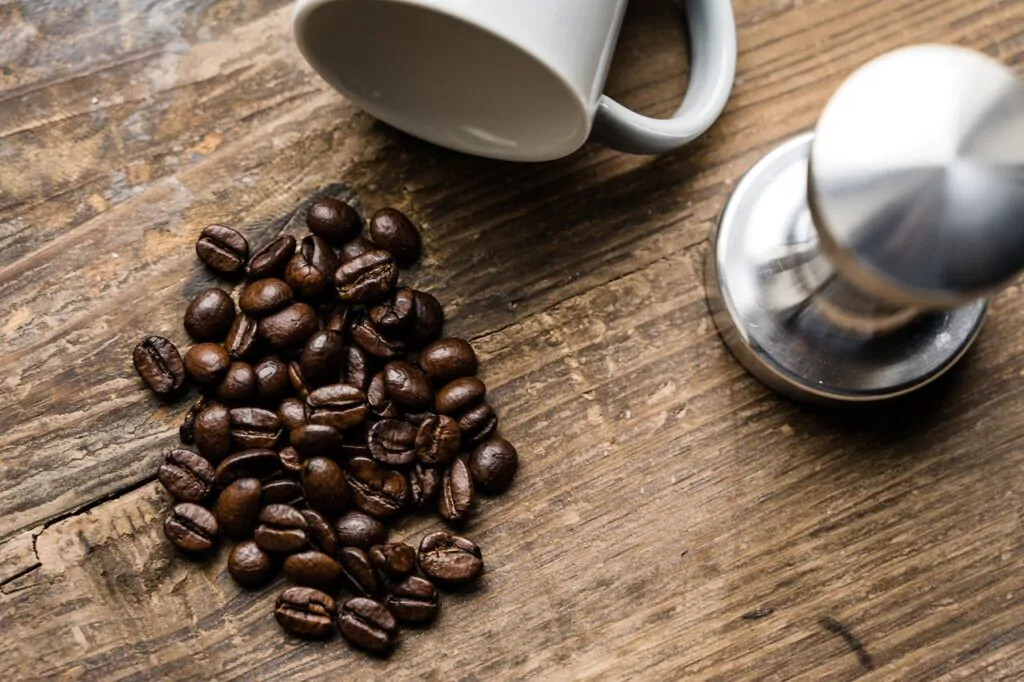Ever wondered how many beans are in a cup of coffee? Well, there are many factors to consider. Read on to see more detailed information.

It will come as no surprise to people that I love coffee. Everything about it makes me happy. I’ve dedicated my life to discovering new things and spreading great information. But sometimes I just want to explore some trivia to satisfy my curiosity.
Recently, I wondered how many beans are in a cup of coffee. Surely, I wasn’t the only one who wondered. So, I did some searching, interviewing, and experimenting to find the answer.
How many beans are in a cup of coffee? This answer will vary depending on your coffee type, size of your serving, your grind level, and even your brewing method. On average, however, for a 12 oz cup of coffee, there are between 90 and 150 beans.
Even I was surprised to learn just how many factors go into figuring out how many beans are in a cup of coffee. There was a lot more science and math involved than I anticipated. But in the end, I realized that all of this research and experimentation will help me make the best coffee possible.
Keep reading for all the details.
- How Does Coffee Type Affect The Number Of Beans In A Cup Of Coffee?
- How Does Roast Level Affect The Number Of Beans In A Cup Of Coffee?
- How Grind Level Affects The Number Of Beans In A Cup Of Coffee
- Brewing Method Affects The Number Of Beans In Your Coffee
- Bean Weight Or Count: What's More Important For Making Coffee?
- What Does This Have To Do With The Number Of Beans In A Cup Of Coffee?
- How Many Beans Are In A Cup Of Coffee FAQs
How Does Coffee Type Affect The Number Of Beans In A Cup Of Coffee?
The simple answer is that each type of bean will be a different size, shape, and weight. All of these factors contribute to how many beans you can fit into your coffee maker and therefore into your cup. But it’s not that simple.
To make matters even more complicated, not only does the species of the coffee bean matter, but the growing conditions of the plant play a big role. Obviously, growing conditions are out of your control as a consumer; there will always be a variance in size, shape, and weight, even within the same coffee bean species. But, as with everything else, we can look at the average and go from there.
Whole coffee beans weigh nearly the same as ground coffee, but we’ll get to that in a moment.
The average roasted coffee bean weighs about .1 to .15 grams. But you have to keep in mind that some species are quite large, such as the “elephant” beans, which can be around .4 grams each! The other side of that coin is that heirloom varieties tend to be much smaller.
How Does Roast Level Affect The Number Of Beans In A Cup Of Coffee?
During roasting, coffee can lose between 15 and 20% of its total weight. Weight will play a role in how much coffee you can fit into your filter, and therefore will factor into how many total beans are in your cup of coffee.
Here’s the lowdown on roast level and weight of coffee beans.
Basically, the longer a coffee bean is roasted, the less it will weigh. Beans become progressively less dense the longer they are roasted. This is because roasting removes moisture, slightly changing the structure of the bean.

What many people don’t realize is that the mere act of grinding your beans will result in some weight loss too. Exposure to the heat in your kitchen and circulating air contribute to moisture loss the moment you begin grinding your beans.
Why does this matter? Because moisture takes up space. The more moisture you lose from your coffee grounds, the more space there is for more coffee.
Please keep in mind that I’m not talking about the flavor profile or water ratio here. This is all about the number of coffee beans in a cup of coffee and what might affect your numbers. You won’t likely notice differences day-to-day, but we’re talking science here, so I wanted to be clear about the minuscule weight loss through evaporation.
How Grind Level Affects The Number Of Beans In A Cup Of Coffee
All it takes is a little more science knowledge to understand how to grind level affects the number of coffee beans in your cup of Joe. This is referring to volume, not weight, so put your scales away. This section is all about measure cups and spoons.
The smaller the grind, the more beans you’ll be able to fit into each cup of coffee. A courser grind takes up much more room than a very fine grind, for example. It’s like putting rocks or sand in a glass jar. You’ll fit much more sand in the jar because the overall volume of the sand grains is much smaller than the rocks.
But we’re not brewing sand and rocks, so let’s get back to coffee! If your goal is to fill a specific sized filter—such as an espresso portafilter—then you’ll want to get maximum bang for your buck.
In this case, a very finely ground dark roast bean will fill up less volume than a coarsely ground light roast or green coffee bean, resulting in a stronger flavor and room for a lot more beans.
Science!
Brewing Method Affects The Number Of Beans In Your Coffee
Your chosen brewing method has a big effect on the total number of beans that go into each cup of coffee. I tried several different styles of coffee makers and different brewing methods and was surprised by my results. My research after the fact confirmed my results though, so I’m confident in my results.
For a stronger coffee, and more intense flavor, espresso uses a large amount of finely ground coffee beans compressed tightly. This is often referred to as a “puck”.
The espresso machine then forces pressurized, almost-boiling water through the compressed puck. As we learned above, espresso packs a lot of beans into a smaller space.
On the other hand, a low-end drip coffee machine will need a much smaller amount of coffee grounds to send water through. They don’t need to stuff as much coffee into the filter as an espresso machine does, so the grounds are much looser, taking up more overall space. That means fewer beans in a larger space.
Each method will require a specific amount of coffee beans, and you may need to experiment to get it right. This isn’t taking into account your personal preference, though, so ignore that for a moment.
As I pointed out, an espresso machine can fit a lot more coffee beans than other methods mainly due to the size of the grind and the compression of the grounds. But other methods can use up a lot of beans, too.
Some other brewing methods include the Aeropress, French press, a percolator, and a wide variety of drip coffee machines. My experience showed me that standard, everyday drip coffee machines take fewer beans than expensive, high-end machines, but you can definitely taste the difference.
Bean Weight Or Count: What’s More Important For Making Coffee?

The exact number of beans in a cup of coffee is decided by a lot of factors, as you can see. But generally speaking, coffee is sold by weight, not bean count. I mean, have you ever walked into a store and bought exactly 150 coffee beans?
Since coffee is sold by weight, not volume or number of beans, each cup is therefore portioned out by weight—or by the tablespoon for many coffee enthusiasts at home. Counting out the exact number of beans for this article was more for curiosity’s sake.
We talked a little about volume already, but it’s important to understand how this can affect your coffee. Cans of generic coffee sold in stores will usually say a specific number of tablespoons per “cup” of coffee.
Some will go as far as telling you how much water to use (a “cup” varying between 6 ounces of water and 12), but for the perfect cup of coffee, you should be weighing everything.
Weight is more important than volume when it comes to a satisfying cup of coffee. Use a kitchen scale to get the right ratio. Try it once or twice to see what I mean.
What Does This Have To Do With The Number Of Beans In A Cup Of Coffee?
Everything! Because by now you should realize that there is simply too long of a list of factors dictating the number of beans in a cup of coffee. You’d drive yourself mad counting out the exact number of beans each morning, only to discover that the roast is different, the beans are of unequal size, and your coffee is never the same.
For the best cup of coffee, no matter your brew style, roast preference, or cup size, you should be weighing your coffee grounds carefully.
How Many Beans Are In A Cup Of Coffee FAQs
How many grams of coffee beans are in a cup of coffee?
The answer will vary depending on roast time, brewing method, and your preferred strength. On average, there are about 7 to 18 grams of coffee beans in each cup of coffee.
How many coffee beans would you need to eat to get as much caffeine as in a cup of coffee?
Coffee beans have about 6 mg of caffeine in each bean. The average cup of coffee has approximately 90 mg of caffeine. That would mean you must eat at least 15 coffee beans to get the same amount of caffeine.
How many cups of coffee can you make with 5 Lbs of whole bean coffee?
This depends on how you prepare your coffee. Weaker coffee will require less coffee grounds, while stronger coffee will require more. For an average cup of Joe, you’d get about 120 cups of coffee.
See also:
WHAT IS KONA COFFEE?
15 USES FOR COFFEE CREAMER (BESIDES COFFEE)
IS IT CHEAPER TO GRIND YOUR OWN COFFEE BEANS?

